Sikorsky Product History
Sikorsky S-67 Blackhawk
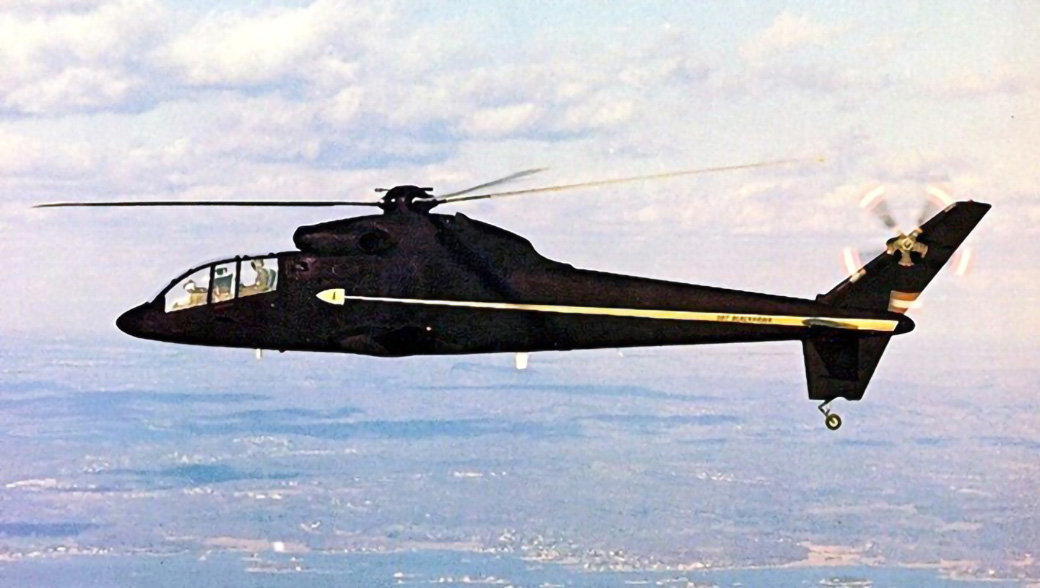
Background
In the mid 1960s Sikorsky had a good level of business, with S-61s, S-64s and S-65s in production. But over the last decade Sikorsky had lost competitions for the army utility helicopter (won by Bell with the UH-1), the army large utility helicopter (won by Vertol with the CH-47 Chinook), the LOH, Light Observation Helicopter (won by Hughes with the OH-6), the AAFSS, Advanced Aerial Fire Support System (won by Lockheed with the AH-56 Cheyenne) and the HLH, Heavy Lift Helicopter (won by Boeing Vertol). The future became a concern, with no new production programs in sight. Numerous new approaches were being investigated. One of these was the S-67 Blackhawk.
As the AH-56 Cheyenne program proceeded with numerous technical issues, Sikorsky saw an opportunity to compete in the gunship-type aircraft market. In 1969, under company funds, Sikorsky built the S-67 Blackhawk (Note that this is one word, not to be confused with the later UH-60 Black Hawk – two words). The S-67 was a true “skunk works” type of development, completed in a remarkable short nine months and at a cost of less than $3 million. Design was initiated in November 1969, fabrication started in February 1970, and first flight occurred on August 20, 1970.
The S-67 consisted of an all-new narrow tandem two-person fuselage combined with the dynamic system from the S-61/H-3 production helicopters. It was a “semi-compound” including a wing but not auxiliary propulsion.
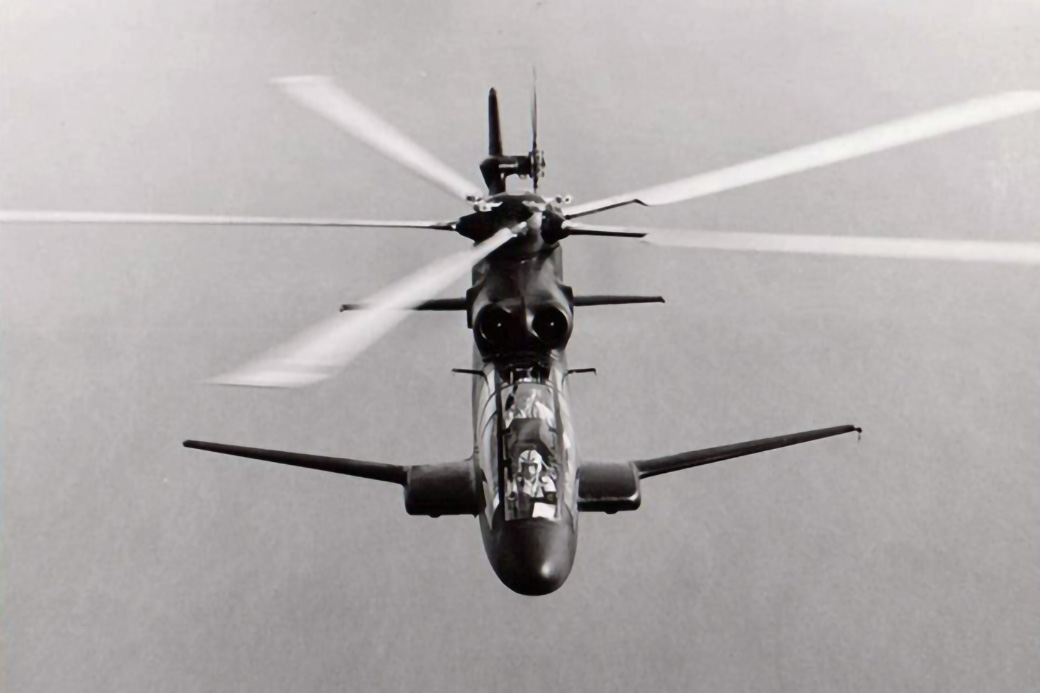
It was proposed for the attack mission, where it could carry 7,000 pounds of arms and ammunition. It could use existing weapons, such as the turret-mounted 7.62 gun, 20- and 30-millimeter cannon, the 40-millimeter grenade launches, and wing mounted rocket and TOW missile pods.
For search and rescue missions it could fly 600 miles at high speed, using auxiliary fuel tanks mounted on the wing. It could be used for observation/surveillance, carrying sophisticated electronic equipment to detect and record the emplacement and movement of enemy installations. With cabin modification it could transport as many as six armed troops at 165 miles an hour over distances up to 220 miles. And it could be used to transport external loads weighing as much as three and one half tons.
The aircraft flew from 1970 to 1974. Pilots reported that it was very smooth and responsive. It was very maneuverable, and performed loops, rolls and split-S maneuvers during numerous flight demonstration.
Although company funded, after initial testing the army did give Sikorsky four small contracts of approximately $100,000 each to evaluate 1) the maneuverability and control up to the airframe’s 3.3g structural limit, 2) the stabilator all-moving horizontal tail, 3) the dive brakes, and 4) the pilot’s artificial force feel system.
The Cheyenne program had been cancelled late in 1969. In 1972 the army evaluated the S-67 and the Bell 309 “King Cobra” as alternatives. As part of this effort, Sikorsky proposed a “production” configuration and provided cost data. This increased the gross weight by 3,500 pounds and added two more stores pylons on the wing for a total of six.
The army decided instead to initiate a new gunship program, the Armed Attack Helicopter, AAH, which eventually became the Hughes (now Boeing) AH-64 Apache.
Sikorsky then made a few modifications to the aircraft and embarked on a foreign tour. The small cabin behind the cockpit was converted into a thermally- and acoustically-insulated troop compartment for six troops, with access provided through a door on the left side of the fuselage. The cockpits were redesigned to better represent a production configuration, a hoist was added, and a gun turret for a 20-mm multi-barrel gun was installed. Demonstrations were conducted in four foreign countries.
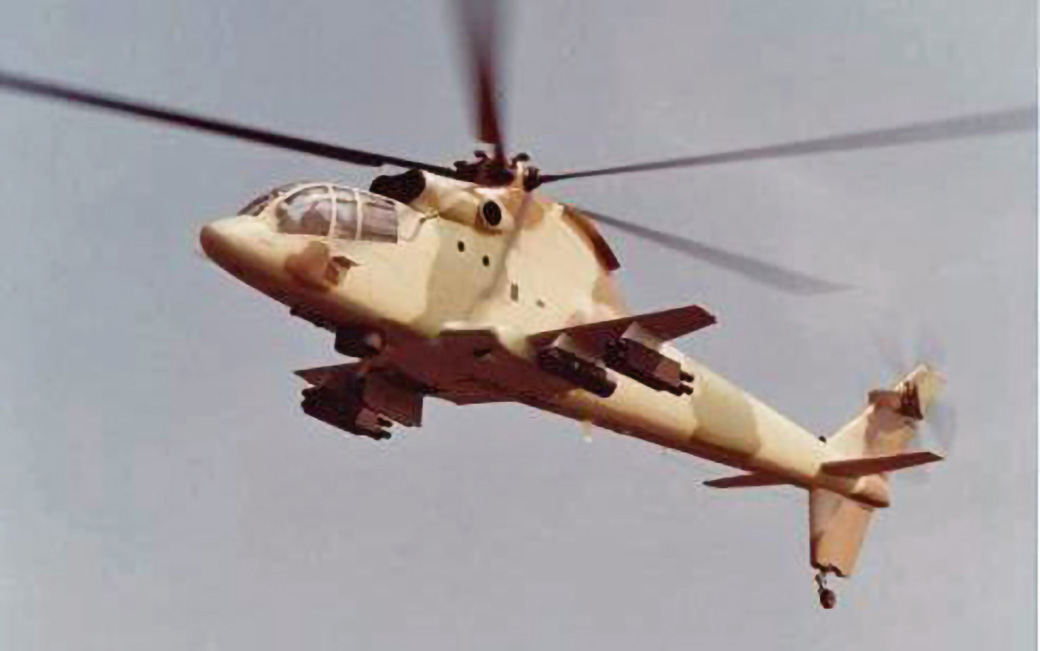
On September 1, 1974 the S-67 was conducting a flight demonstration at the Farnborough air show in England. During a tight maneuver close to the ground it crashed and was destroyed.
The aircraft had flown a total of 598 hours. With no real prospects for production, this ended the program.
Configuration Features
The main feature of the S-67 was its narrow fuselage with a two-man tandem cockpit. It was designed for low drag to improve its speed potential, including a main rotor head fairing and a sealed rotor pylon to reduce momentum losses.
The full dynamic system from the S-61/H-3 was used, including the rotors, drive system, and engine installation plus the hydraulic and electrical systems. The forward pilot’s station used a side arm controller in place of the conventional cyclic stick.
A new engine inlet design was developed for maximum ram recovery and minimum installation losses. The rotor blades had blade tips swept at 20º to delay compressibility effects, lower vibration, reduce noise and to provide for higher speeds. The knowledge gained from the blade’s swept tip led to similar swept tips being adopted for the S-70 UTTAS program. Sikorsky’s rotor mounted bifilar vibration absorber was also used.
A 28 foot span wing was included to provide improved maneuverability at high speeds and also to serve as a mount for guns, missiles and bombs. Partially relieved of its lifting job by the wing, the rotor loads were reduced and increased stress margins were available for more aggressive control.
Wing-mounted speed brakes, used for the first time on a helicopter, provided added agility and control in combat maneuvers. The brakes increased the time on target and provided better firing accuracy. Able to open or closed in three seconds, they gave a 28 square foot increase in drag. This yielded an increase in deceleration of up to 100%. Or a 38% steeper dive angle. The brakes, in conjunction with the stability provided by the fin and stabilator, enabled the S-67 to hold much steadier on target at all speeds.
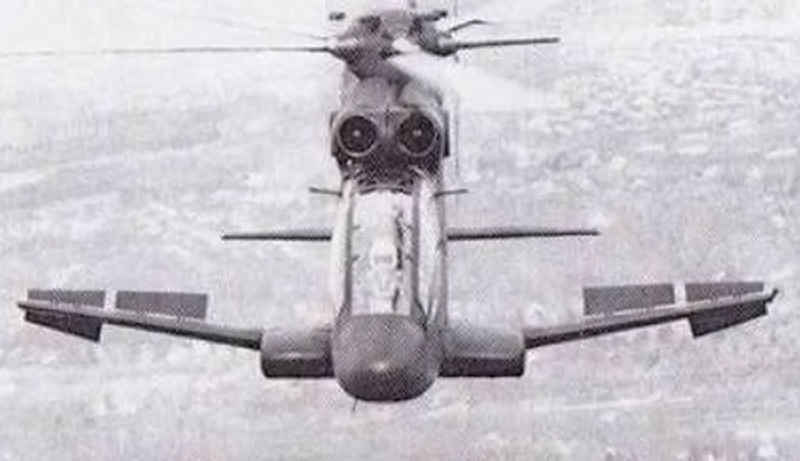
The vertical stabilizer had incidence and camber to unload the tail rotor at cruise speed. The fin was sized to permit return to base after loss of the tail rotor. The horizontal stabilizer was a “flying tail” with variable incidence to improve agility, reduce rotor stresses in maneuver, and to control fuselage pitch for alignment with targets. The stabilator was coupled to the control system and could be trimmed electrically to also provide center of gravity adjustments.
The main landing gear was retractable, the tail wheel was not.
General Arrangement Drawing
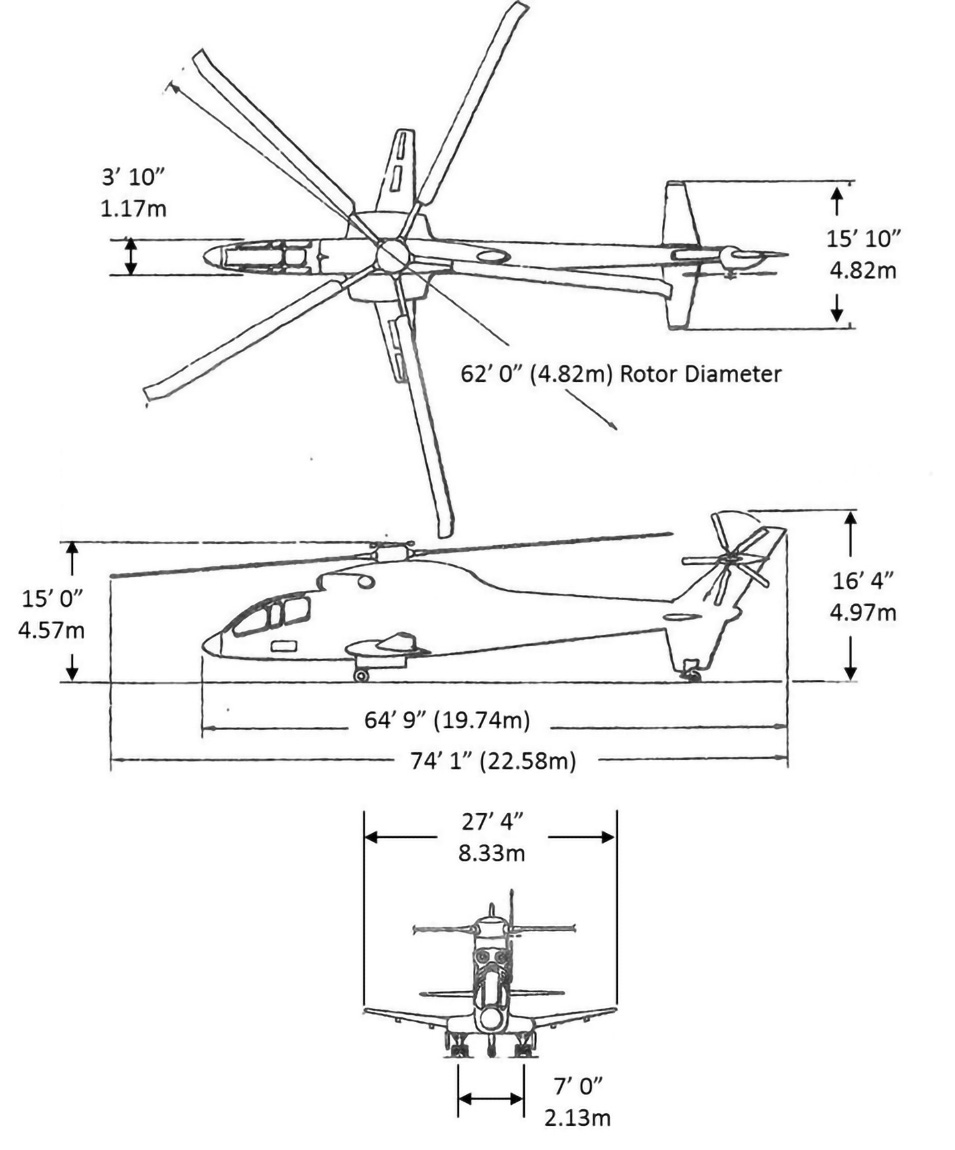
Mission Systems
The S-67 firepower was impressive. It could carry eight rocket pods for a total of 152 2.75 inch folding fin rockets as well as a multi-barrel 20 mm cannon. Other weapons choices were 16 TOW anti-tank missiles or a mix of eight TOWs and four Sidewinder air-to-air missiles.
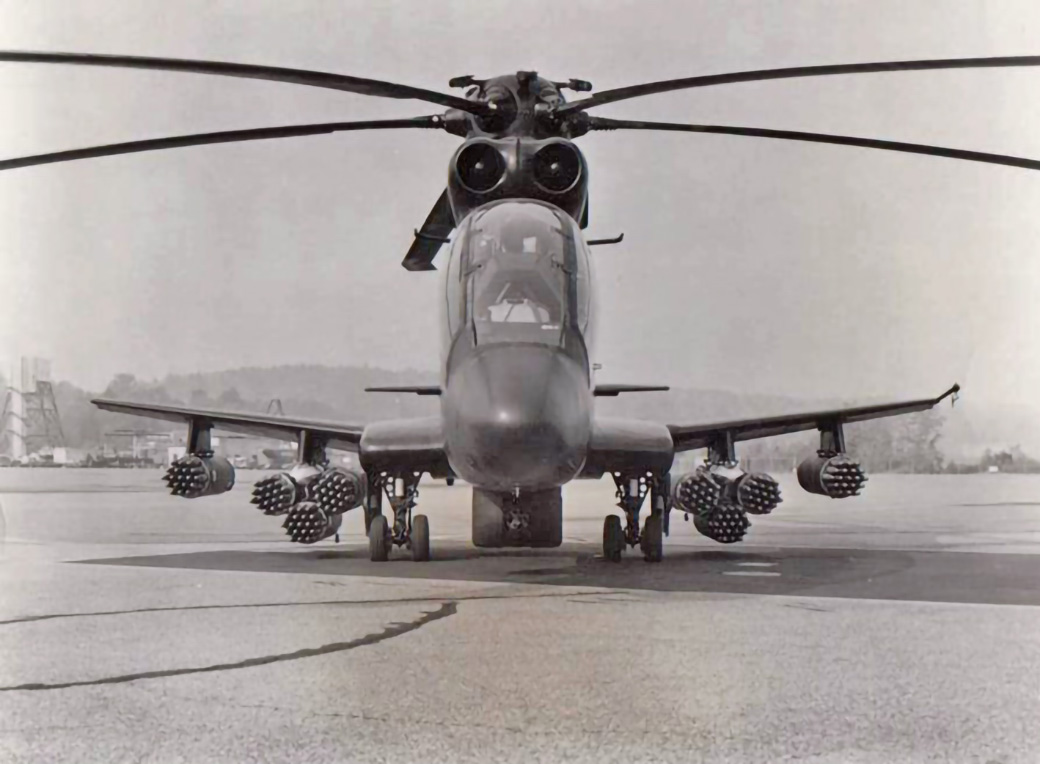
The production configuration was proposed with six wing stores locations, rather than the four on the prototype.
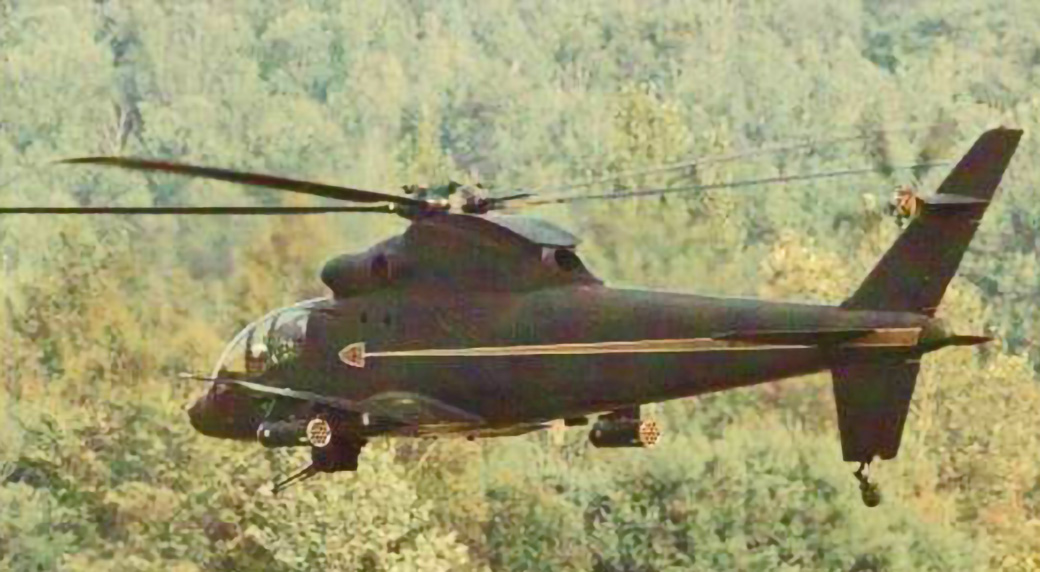
General Characteristics and Performance
| S-67 Characteristics and Performance | |
|---|---|
| Normal Gross Weight | 18,500 lbs |
| Maximum Takeoff Gross Weight | 22,000 lbs |
| Empty Weight | 12,525 lbs |
| Engines | General Electric T58-GE-5 |
| Take-off Power (5 minutes) | 1500 hp |
| Military Power (30 minutes) | 1400 hp |
| Continuous Power | 1250 hp |
| Max. Continuous Cruise Speed | 175 knots |
| Normal Cruise Speed | 145 knots |
| Max Rate of Climb, Two Engines | 2000 fpm |
| Max Rate of Climb, One Engine | 315 fpm |
| Hover Ceiling, In Ground Effect | 9700 ft |
| Hover Ceiling, w/o Ground Effect | 6500 ft |
| Fuel Consumption in Cruise | 1265 lbs/hr |
| Range, Internal Tanks | 282 nmi |
| Rotor Diameter | 62 ft |
| No. of Main Rotor Blades | 5 |
| Blade Chord | 18.25 in |
The aircraft was fast and highly maneuverable. In 1970 it set speed records for helicopters without auxiliary propulsion of 191 knots over the 15-to-25 kilometer distance and 188 knots over a three kilometer distance.
Related Models
The Blackhawk was also used as a flight test vehicle for a fan-in-fin anti-torque system to replace the conventional tail rotor. Fan diameter was 4 ft. 8 ins. In this configuration in 1974 the S-67 achieved a maximum speed of 200 knots in a dive. This provided data for future aircraft designs. It was studied for use on UTTAS, but not used there. It did appear on the RAH-66 Comanche, developed many years later. After the evaluation of the fan-in-fin concept, the aircraft was reconverted to its tail rotor configuration.
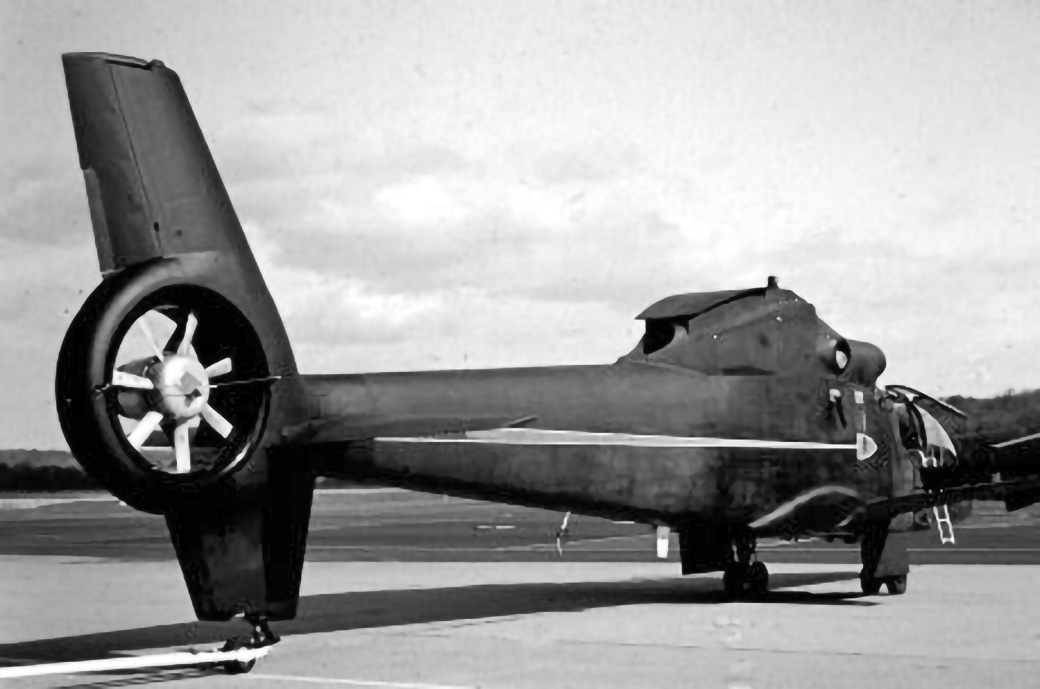
Sikorsky did propose an aircraft for the army’s AAH Advanced Attack Helicopter program. This was the S-71 and was based on the rotor and dynamic systems of the S-70 UTTAS. The S-71 is described in another section of this Sikorsky model history. The army chose Bell and Hughes to build AAH prototypes and Sikorsky did not again develop a gunship type aircraft until the RAH-66 Comanche.
Additional Information Sources
SIKORSKY TESTING FAST ARMED HELICOPTER, Aviation Week & Space Technology, September 21, 1970
SIKORSKY UNVEILS NEW GUNSHIP, Rotor & Wing, Nov/Dec 1970
BLACKHAWK EXHIBITS SPEED, AGILITY, Pilot Report, Aviation Week & Space Technology, February 15, 1971
- by Art Linden
Related Articles
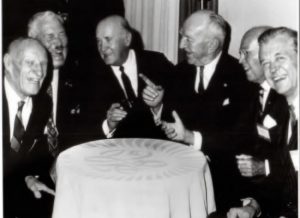
Predictions of a Pioneer
Igor Sikorsky’s predictions for air travel in general and for helicopters in particular have been largely realized or surpassed.
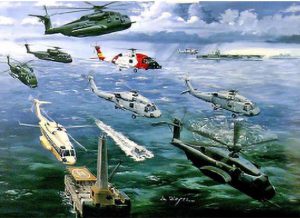
Sikorsky Aircraft Paintings by Andy Whyte
This issue of the newsletter is devoted to the aircraft designs and paintings by Andy Whyte, who had a 40 year career at Sikorsky Aircraft.
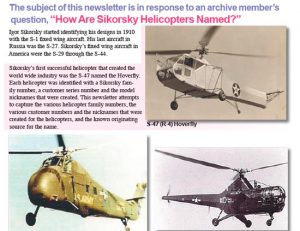
How Sikorsky Helicopters Are Named
The subject of this newsletter is in response to an archive member’s question, “How Are Sikorsky Helicopters Named?”
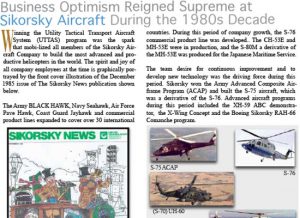
Sikorsky Aircraft in the 1980s
Business optimism reigned supreme at Sikorsky Aircraft during the 1980s decade.
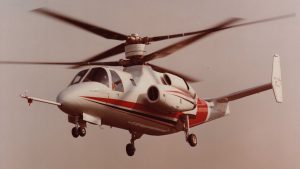
ABC: The High Speed Helicopter
Sikorsky Aircraft created the Advancing Blade Concept during the 1970s with the goal of significantly increasing helicopter flight speed.
